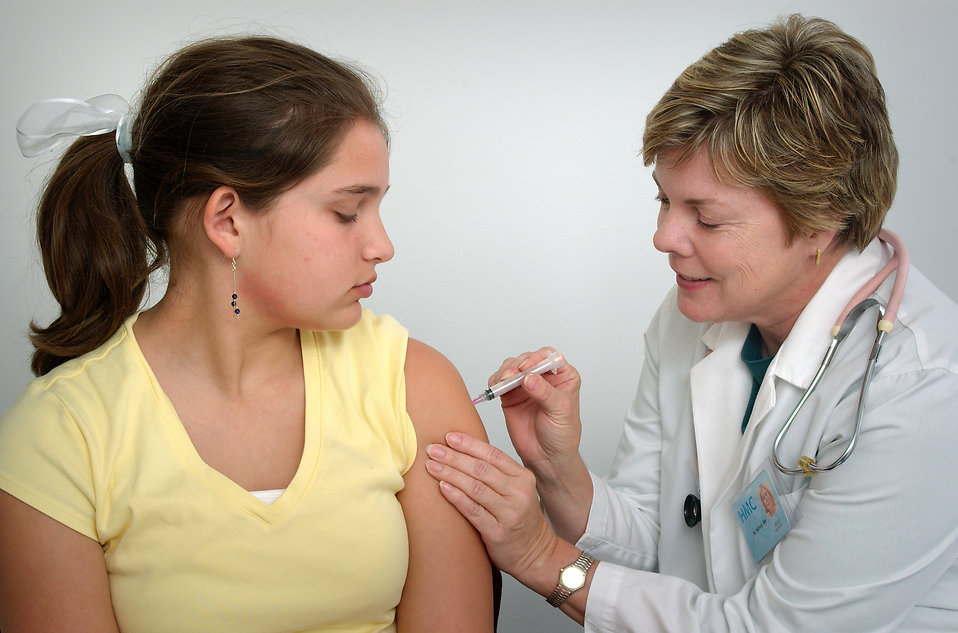Propaganda Machine of $4.3 Billion Influenza Vaccine Industry Is in Full Swing

Flu season is upon us again — the time of year when the steady message is “Have you gotten your flu shot yet?” Considering the many studies showing flu vaccines offer minimal protection against illness even when well-matched to circulating viral strains, the fact that vaccination continues to be touted as your first line of defense against influenza suggests this annual campaign is more about generating conformity for profit rather than actually improving and protecting public health.
Questionable Data Used to Support Annual Flu Vaccination Campaigns
Statistics reveal that in most years, flu shots are at best 50 to 60 percent effective at preventing lab confirmed type A or B influenza requiring medical care.1 In the decade between 2005 and 2015, the influenza vaccine was less than 50 percent effective more than half of the time.2
The 2017/2018 flu vaccine was a perfect example of this trend. The overall adjusted vaccine effectiveness against influenza A and B virus infection was just 36 percent.3
According to a 2014 meta-analysis,4 71 people have to be vaccinated in order for a single case of influenza to be avoided — a ratio that speaks to the ineffectiveness of this annual routine. Adding insult to injury, evidence5 (which was confirmed three years later6) suggests flu vaccination may double your risk of contracting pandemic influenza or a more serious bout of influenza.
Research7 published in 2011 also warned the seasonal flu vaccine appears to weaken children’s immune systems and increases their chances of getting sick from influenza viruses not included in the vaccine.
When blood samples from healthy, unvaccinated children and children who had received an annual flu shot were compared, the unvaccinated group had naturally built up more antibodies across a wider variety of influenza strains compared to the vaccinated group.8
Evidence also shows you can get vaccinated, show few or no symptoms and still shed and transmit influenza to other people.9,10 Flu vaccines are also associated with debilitating and potentially lifelong side effects such as Guillain-Barré syndrome and chronic shoulder injury related to vaccine administration.
2018/2019 Flu Season Brings Back Failed Nasal Spray Vaccine
Flu vaccines are by their nature a tricky business because influenza viruses are constantly evolving and public health officials have to guess at least six months before the flu season starts which type A and B influenza virus strains might end up being predominant so drug companies can manufacture the vaccines.
When the strains chosen do not match the strains actually causing most of the disease in any given flu season, the vaccine’s failure rate significantly increases. But it’s also important to realize that the majority of respiratory influenza-like illness that people experience during any given flu season is not type A or B influenza.11
When you get a sore throat, runny nose, headache, fatigue, low grade fever, body aches and cough, most of the time it is another type of viral or bacterial respiratory infection unrelated to influenza viruses.12
In fact, data13,14,15,16 shows other types of viruses are responsible for about 80 percent of all respiratory infections during any given flu season. The flu vaccine does not protect against or prevent any of these other types of respiratory infections causing influenza-like-illness (ILI) symptoms.
The chance of contracting actual type A or B influenza, caused by one of the three or four influenza virus strains included in the vaccine, is much lower compared to getting sick with another type of viral or bacterial infection during the flu season.
All of that said, there are several different types of influenza vaccines to choose from in any given year. This year, the live attenuated nasal spray vaccine (FluMist), which the CDC Advisory Committee on Immunization Practices did not recommend during the 2016/2017 and 2017/2018 seasons due to its extreme ineffectiveness, is back and once again being recommended by the CDC.17
For the 2018/2019 season, FluMist is approved for nonpregnant individuals between the ages of 2 and 49. Exceptions18 include children taking aspirin- or salicylate-containing medications, those with suppressed immune function, children aged 2 to 4 who have asthma, those who have taken an antiviral drug in the previous 48 hours, and a few others.
High-Dose Flu Vaccine for Seniors — ‘Costs Outweigh Benefits’ Canadian Experts Say
You also have the injectable inactivated influenza vaccines, including a high-dose version for seniors over the age of 65, which contains four times the amount of antigen as the regular dose of the standard vaccine. In Canada, infectious disease experts have spoken out against the vaccine, saying it’s not effective enough to justify its high cost, which is about five times that of the regular flu vaccine.19
According to British Columbia’s provincial health officer Bonnie Henry, research suggests 200 seniors would have to be vaccinated with Fluzone High-Dose to prevent a single case of influenza, and 4,000 would have to be vaccinated to prevent one flu-related hospitalization.20
Due to its poor performance, British Columbia, Quebec, Alberta, New Brunswick and Newfoundland will not cover the cost of Fluzone High-Dose for seniors who would otherwise get free regular flu shots. The Globe and Mail reports:21
“The divergent policies are part of a continuing debate over the targeted flu shot that experts say has major implications for future influenza vaccination programs — and the amount of money it costs to deliver them …
Danuta Skowronski, epidemiology lead of influenza and emerging respiratory pathogens at the BC Centre for Disease Control, said the benefits don’t justify the price.
She also said the new flu shot has only been studied for a few seasons and that there are unanswered questions health policy officials should consider before they get locked into an expensive multiyear agreement.
For instance, emerging research suggests people who get repeat flu shots every year may actually experience reduced immunity in subsequent years. That could have implications for seniors who receive a high dose of the flu shot, she said.”
What You Need to Know About Flu Vaccines Made From Dog Kidney and Insect Cells
A relative newcomer in the vaccine lineup is the quadrivalent influenza vaccine called Flucelvax, which became available during the 2017/2018 season. Approved for individuals over the age of 4, this vaccine is unique in that it uses dog kidney (MDCK) cells for production.22
Traditionally, candidate vaccine strain influenza viruses, i.e., the viruses selected for inclusion in the vaccine, have been produced using fertilized chicken eggs. Flucelvax viruses are grown in cultured animal cells instead.23 (Another relatively new technology uses insect (army worm) cells to produce a recombinant quadrivalent influenza vaccine, Flublok, for individuals over 18 years old.24,25)
As the effectiveness of conventional flu shots continues to leave much to be desired, the new Flucelvax vaccine was touted as a new-and-improved version that would protect more people once flu season hit. In reality, a study26 by the U.S. Food and Drug Administration (FDA) revealed its benefit was quite modest.
While flu vaccines overall were only 24 percent effective in preventing flu-related hospitalizations in people aged 65 and older, the Flucelvax vaccine had an effectiveness rate of 26.5 percent in that population — hardly a major improvement.
It’s been known for some time that growing flu vaccines in eggs may lead to problematic mutations that make them less effective against circulating influenza viruses. Such was the case during the 2016 to 2017 flu season, when H3N2 viruses were prevalent.
Writing in PNAS,27 researchers noted, “Human vaccine strains grown in eggs often possess adaptive mutations that increase viral attachment to chicken cells.” They identified a mutation in the flu vaccine strain that produced antibodies that didn’t work well to neutralize the H3N2 viruses circulating that year.
But the hope that cell-based vaccines might solve this problem appears overly optimistic. Dr. John Treanor, a flu vaccine expert at the University of Rochester Medical Center, told STAT News in 2017,28“There wasn’t convincing evidence that it [cell culture flu vaccine] was better, so why would anyone spend extra money to buy that?”
This was before the FDA data came in on the 2017 to 2018 season, which offered proof that the effectiveness was virtually identical to the conventional egg-based version.
Lack of Quality Vaccine Science and Transparency
In his 2013 article,29 “Influenza: Marketing Vaccine by Marketing Disease,” BMJ associate editor Peter Doshi, Ph.D., points out the lack of quality science underpinning the annual call for flu vaccination and the government’s lack of transparency. He noted that in its marketing of influenza vaccines, the CDC fails to uphold its pledge “to base all public health decisions on the highest quality scientific data, openly and objectively derived.” The Vaccine Reaction summarizes Doshi’s comments, in part:30
“Promotion of influenza vaccines is one of the most visible and aggressive public health policies today … Closer examination of influenza vaccine policies shows that although proponents employ the rhetoric of science, the studies underlying the policy are often of low quality, and do not substantiate officials’ claims.
The vaccine might be less beneficial and less safe than has been claimed, and the threat of influenza appears overstated … Mandatory vaccination policies have been enacted … forcing some people to take the vaccine under threat of losing their jobs.
The main assertion of the CDC that fuels the push for flu vaccinations each year is that influenza comes with a risk of serious complications which can cause death …
The only randomized trial of influenza vaccine in older people found no decrease in deaths. This means that influenza vaccines are approved for use in older people despite any clinical trials demonstrating a reduction in serious outcomes.
Even when the vaccine is closely matched to the type of influenza that’s prevalent … randomized, controlled trials of healthy adults found that vaccinating between 33 and 100 people resulted in one less case of influenza … For most people, and possibly most doctors, officials need only claim that vaccines save lives, and it is assumed there must be solid research behind it.”
Health Care Worker Flu Shot Mandates Are Based on Four Invalid Trials
A perfect example of what Doshi is talking about was published January 2017. This scientific analysis31,32 of four randomized controlled trials, which claim vaccinating health care workers against influenza offers significant protection for patients, were in fact overstated, and grossly so. According to the authors:
“In attributing patient benefit to increased health care worker influenza vaccine coverage, each cluster randomized controlled trial was found to violate the basic mathematical principle of dilution by reporting greater percentage reductions with less influenza-specific patient outcomes … and/or patient mortality reductions exceeding even favorably-derived predicted values by at least six- to 15fold.
If extrapolated to all long-term care facilities and hospital staff in the United States, the prior cluster randomized controlled trial-claimed number needed to vaccinate of 8 would implausibly mean >200,000 and >675,000 patient deaths, respectively, could be prevented annually by health care worker influenza vaccination, inconceivably exceeding total U.S. population mortality estimates due to seasonal influenza each year, or during the 1918 pandemic, respectively.
More realistic recalibration based on actual patient data instead shows that at least 6,000 to 32,000 hospital workers would need to be vaccinated before a single patient death could potentially be averted.”
The researchers concluded that these four trials, which are the basis for policies of enforced vaccination of health care workers “attribute implausibly large reductions in patient risk to health care worker vaccination, casting serious doubts on their validity,” adding that “The impression that unvaccinated health care workers place their patients at great influenza peril is exaggerated.”
Independent Scientists Unable to Obtain Vaccine Trial Data
Europe also suffers from the same lack of transparency in vaccine research and public policy, as evidenced by Cochrane scientists’ failure to obtain the necessary vaccine trial data required to evaluate the quality of 11 clinical trials on the HPV vaccine held by the European Medicines Agency (EMA).
Detailed information about a study’s design, conduct and outcome can only be found in the trial’s clinical study report (CSR), which drug companies are required to submit when applying for a new drug license. Transparimed.org reports:33
“Since 2014, in theory, independent scientists can access these documents by filing a request with the European regulator. In practice, the Cochrane team reports:
‘After three years, we had obtained just 18 Clinical Study Reports (62 percent of the EMA’s 29 reports) … Unfortunately, the reports still lacked important sections, such as protocols and serious harms narratives … Only three reports included completed case report forms … One study report of 4,263 pages was released in 17 files across seven batches over 12 months.’”
What’s more, the Cochrane scientists discovered that the EMA itself does not always receive all of the scientific evidence, as some of the submitted CSRs were incomplete. The team’s attempts to obtain the CSRs directly from the drug companies were equally fruitless. According to Cochrane:
“Although GlaxoSmithKline published versions of its Clinical Study Reports on its trial register, the reports often lack serious adverse events narratives and case report forms, and the data on serious adverse events in the reports we downloaded was heavily redacted.”
Needless to say, without access to the CSRs, independent scientists such as the Cochrane group cannot assess the benefits and harms of the drugs or vaccines under review with any significant degree of accuracy or confidence.
“In our view, independent researchers ought to be able to obtain complete and unredacted Clinical Study Reports within a reasonable time frame without too many constraints or limitations,” Cochrane writes.
“[R]egulators should release complete and coherent Clinical Study Reports… Urgent changes are essential for open and transparent assessment of the harms and benefits of interventions.”
Professor Makes Bizarre Claim for Children’s ‘Vaccination Rights’
In related news, Arthur L. Caplan, Ph.D.,34 a New York University (NYU) professor and founding head of the Division of Medical Ethics at NYU School of Medicine, raised more than a few eyebrows by claiming that a child’s presumed right to be vaccinated supersedes the parents’ legal right to exercise informed consent to vaccination on behalf of minor children.
In plain English, Caplan believes minor children should be vaccinated according to government recommendations regardless of whether parents have made an informed decision to decline one or more vaccinations for their child. As reported by The Vaccine Reaction,35 Caplan “claims that vaccinating children represents a higher moral imperative than respecting the informed consent rights of parents.”
“‘I want to point out a moral stance that I don’t think has gotten enough attention, which is that every child has the right to be vaccinated,’ said Caplan. ‘We keep talking about parents’ right to say yes or no, to avoid mandates or requirements, or to do what they choose to do. Someone has to speak up and say, ‘Well, what about the kids? Don’t they have any rights?’
Caplan believes that if parents refuse to vaccinate their kids the government has the right to override the legal right of parents to make medical care decisions for their children. Caplan argues that the government has the duty to vaccinate the children without the consent of the parents and by force, if need be.”
In other words, what Caplan is saying is that parents should be prevented from making medical care decisions, especially vaccination decisions, on behalf of their minor children if those decisions do not conform with government policy. What kind of freedom is that? Coming from a self-appointed medical ethicist, this is scary, mind-boggling stuff. It’s barely one step away from all children being treated like property of the government.
Disturbingly enough, attempts to move this kind of public health policy and law forward are already underway, and parents everywhere need to join in the fight to retain their right to make medical decisions for their minor children. If government officials can vaccinate your child against your will, there’s no telling where it will end. As reported by The Vaccine Reaction:
“Legislation has been introduced in states like California that would seek to give government the right to make health care decisions for children, even against the wishes of their parents, if the state deems the decisions to be in the best interests of the children.
Such legislation would also allow government authorities to take legal physical custody of children in cases where parents refuse to comply with mandates forcing or coercing them to vaccinate their children.
The thrust of Caplan’s thought process is that, at least when it comes to vaccination of children, parents should be stripped of their informed consent rights. Apparently, Caplan takes the view that the informed health care decisions that parents make for their children are just not relevant if those decisions conflict with government policy.
But it is precisely this ‘long held legal right to make informed, voluntary decisions about pharmaceutical products and medical procedures that carry risks for their children,’ says Barbara Loe Fisher of the National Vaccine Information Center, that is ‘all that stands between parents and exploitation of their children by those in positions of power in society with a personal or professional vested interest in forcing every child to use pharmaceutical products that are not safe or effective for every child.’”
Sources and References
- 1 MMWR January 16, 2015; 64(01): 10-15
- 2 CDC, December 21, 2015 Influenza Vaccine Effectiveness: How Well Does the Flu Vaccine Work?
- 3 CDC.gov MMWR February 16, 2018; 67(6): 180-185
- 4 Cochrane.org
- 5 ABC News March 4, 2011
- 6 PLOS One 2014; 9(1): e86555
- 7, 8 Journal of Virology 2011 Nov;85(22):11995-2000
- 9 Clinical Infectious Diseases December 22, 2016; 64(6): 736-742
- 10 PLOS ONE December 11, 2012, doi.org/10.1371/journal.pone.0051653
- 11 CDC.gov, Feb. 19, 2016. Update: Influenza Activity – United States Oct. 4, 2015-Feb. 6, 2016
- 12 WebMD March 14, 2017
- 13 FDA. 94th Meeting of Vaccines and Related Biological Products Advisory Committee Transcript. Feb. 20, 2003
- 14 CDC Seasonal Influenza Q&A. Aug. 15, 2014
- 15 CDC 2014-2015 Influenza Season Week 51 Ending December 20, 2014
- 16 JAMA Intern Med 2013; 173(11): 1014-1016
- 17 Press Newswire October 31, 2018
- 18 CDC.gov, Who should not be vaccinated with the nasal spray flu vaccine?
- 19, 20, 21 Globe and Mail October 22, 2018
- 22 FDA.gov. Flucelvax Quadrivalent
- 23 CDC.gov. Cell-Based Flu Vaccines
- 24 CDC.gov. How Influenza (flu) Vaccines Are Made
- 25 FDA.gov Flublok Quadrivalent
- 26 MedicineNet.com, Newer Flu Vaccine Only Slight More Effective in Seniors: FDA
- 27 PNAS November 21, 2017; 114(47): 12578-12583
- 28 Stat News November 7, 2017
- 29 BMJ 2013;346:f3037
- 30, 35 The Vaccine Reaction October 31, 2018
- 31 PLOS ONE January 27, 2017, doi.org/10.1371/journal.pone.0163586
- 32 STAT News January 27, 2017
- 33 Transparimed.org October 4, 2018
- 34 Arthur L. Caplan, Ph.D. bio
Shared under the creative commons license.







